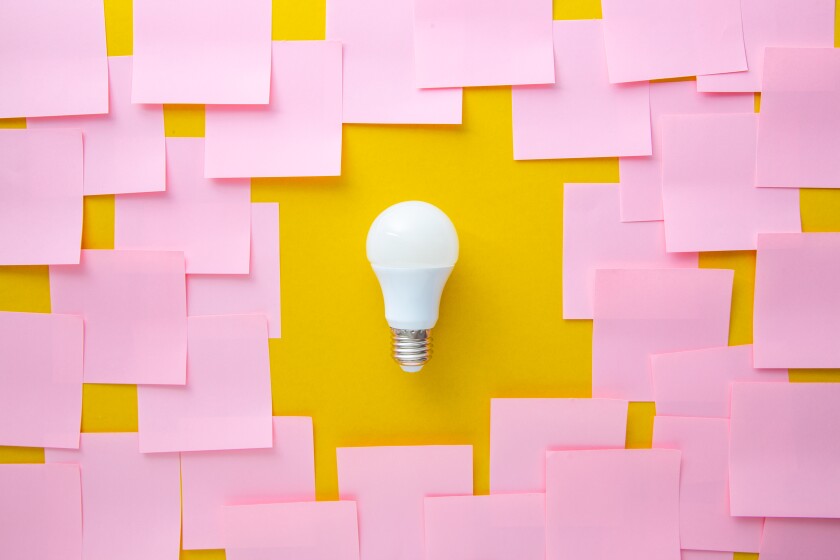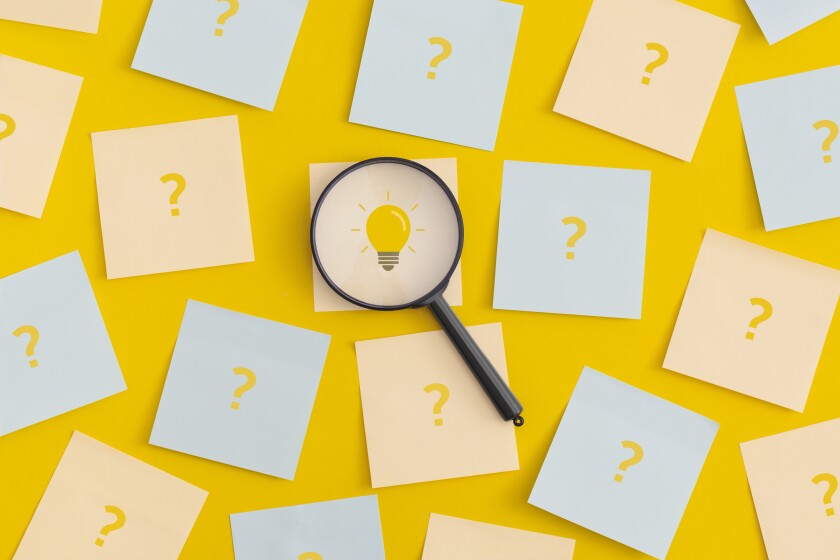WHAT IS INFORMATION LITERACY?
What you'll find on this page
Evolution of Information Literacy
Information literacy is not a new concept, but its importance is ever-growing in today’s information landscape. Paul G. Zurkowski first introduced information literacy in a workforce context in 1974, and soon the idea was adopted by academic and policymaking organizations. In 2003’s Prague Declaration, UNESCO declared information literacy a “human right of lifelong learning.”
In 2015, the Association of College and Research Libraries developed a Framework for Information Literacy in Higher Education, which describes threshold concepts, knowledge practices, and dispositions associated with information literacy. The concepts they describe are embedded in disciplines throughout campus.
According to the American Library Association (2000), “Information literacy forms the basis for lifelong learning. It is common to all disciplines, to all learning environments, and to all levels of education” (p. 2). Visual literacy, data literacy, science literacy, and media literacy are just a few examples of related concepts that fall under the umbrella of information literacy.
-
Toggle ItemCitations
American Library Association. (2000). Information literacy competency standards for higher education.https://alair.ala.org/bitstream/handle/11213/7668/ACRL Information Literacy Competency Standards for Higher Education.pdf
Association of College & Research Libraries. (2015). Framework for information literacy for higher education.https://www.ala.org/acrl/standards/ilframework
UNESCO. (2003). Prague declaration: Towards an information literate society.https://ar.unesco.org/sites/default/files/praguedeclaration.pdf
Zurkowski, P. G. (1974). The information service environment relationships and priorities (Related Paper No. 5). National Commission on Libraries and Information Science, National Program for Library and Information Services.
The credibility and expertise of information resources depend on the context in which they are used, and the information need of the user. Authority is recognized and evaluated differently by various communities, and its level of importance is determined by the information need. Experts are aware of the biases that can influence authority and are open to new perspectives and changes in thought. Novice learners should critically evaluate all information sources and recognize the importance of authority while being aware of its limitations. Experts understand the need to seek authoritative voices, while novice learners may rely on basic indicators of authority.

🧠 Knowledge Practices
- Even if many disciplines have acknowledged someone’s authority, others may challenge their authority.
- Authoritative content can be both formal and informal, as well as span across media types.
- The social nature of the informational ecosystem is changing as authorities are consistently connecting with one another.
📚 Dispositions
- Have an open mind when encountering conflicting perspectives.
- Have a skeptical stance while also being self-aware of personal biases.
- Question traditional ways that authority is granted.
Experts consider various formats and modes of delivery when selecting resources, recognizing that information's creation may be valued differently in different contexts. The creation process, including editing and reviewing, can indicate the quality of information. The dynamic nature of information creation requires ongoing attention to understand evolving processes. Experts evaluate both the creation process and the final product to assess the usefulness of information. Novice learners learn to recognize the significance of the creation process and make more informed choices in matching information products with their information needs.

🧠 Knowledge Practices
- Recognize the relationship between information’s creation process and the information need.
- Monitor how value is placed on different types and formats of information in different contexts.
- Understand how choices impact the purpose of the information and how it will be used in the message.
📚 Dispositions
- Seek out characteristics of information that imply the underlying creation process.
- Accept that the creation of information can begin with a range of formats or modes.
- Accept the ambiguity surrounding the potential value of information creation in developing formats or modes.
The value of information is seen in various contexts, such as publishing practices, access, commodification of personal information, and intellectual property laws. Novice learners may struggle to understand these values in an environment with abundant free information and encounters with rules of citation, plagiarism, and copyright. Experts, as creators and users of information, understand their rights and responsibilities in the scholarly community. They are aware that value can be used to marginalize certain voices, but also leveraged for change or personal gains. Experts also recognize the need for individuals to make informed choices about complying with or contesting current legal and socioeconomic practices related to the value of information.

🧠 Knowledge Practices
- Communicate the purpose and characteristics of copyright, fair use, open access, and public domain.
- Understand that intellectual property is both a legal and social construct that varies by culture.
- Recognize issues regarding access, including lack of access to information sources.
📚 Dispositions
- Respect the intellectual property and original ideas of others.
- Value the skills, time, and effort needed to produce knowledge.
- View themselves as contributors to the information marketplace and not only consumers of it.
Inquiry is a process that involves asking questions and solving problems within or between disciplines that are unresolved. Collaboration and debate are often involved, and the process can extend beyond academia to address personal, professional, or societal needs. Inquiry can range from basic questions to more advanced research methods, and novice learners can acquire strategic perspectives and investigative methods.

🧠 Knowledge Practices
- Formulate research questions based on information gaps or conflicting information.
- Determine appropriate scope and methods for investigation.
- Synthesize information and draw conclusions based on analysis and interpretation.
📚 Dispositions
- Consider research as an open-ended exploration with intellectual curiosity and critical thinking.
- Value persistence, adaptability, flexibility, and multiple perspectives.
- Follow ethical and legal guidelines and seek appropriate help when needed.
- Demonstrate intellectual humility by recognizing limitations in knowledge or experience.
Communities of scholars and professionals engage in a discursive practice of research that involves sustained discussion and negotiation of meaning over extended periods of time. Rather than seeking definitive answers, experts recognize that complex issues may be characterized by multiple competing perspectives. Seeking out diverse perspectives is crucial to gaining a deeper understanding of a topic, and attribution to relevant previous research is an essential aspect of participation in the conversation. While power structures can influence participation, new forms of scholarly and research conversations are providing more avenues for diverse voices to be heard. Novice learners can enter the conversation by developing familiarity with sources of evidence, methods, and modes of discourse in the field.

🧠 Knowledge Practices
- Contribute to scholarly conversation at an appropriate level and in appropriate channels.
- Acknowledge the work of others in their own research.
- Identify and overcome barriers to entering scholarly conversations.
- Critically evaluate contributions made by others and understand the evolution of perspectives on a topic within a specific discipline.
📚 Dispositions
- Recognize ongoing scholarly conversations in their research area.
- Seek out conversations in various venues and see themselves as contributors.
- Understand responsibility when entering the conversation and value user-generated content.
- Recognize systems privilege authorities and strive to overcome language and process barriers to participate and engage.
Searching for information is an iterative process that requires mental flexibility and evaluation of a range of sources. It begins with a question that directs the search for relevant information, and experts understand that searching is a complex experience influenced by cognitive, affective, and social factors. Novice learners tend to search a limited set of resources and use few search strategies, while experts search more broadly and deeply using various strategies based on the context and scope of the information need.

🧠 Knowledge Practices
- Determine the scope of the task and identify interested parties who might have information about the topic.
- Utilize divergent and convergent thinking when searching and match information needs and search strategies to appropriate search tools.
- Design and refine search strategies based on search results and understand how information systems are organized to access relevant information.
- Use different types of searching language appropriately and manage searching processes and results effectively.
📚 Dispositions
- Maintain mental flexibility and creativity in searching for information.
- Acknowledge that the initial attempts at searching may not always yield the expected results.
- Understand that information sources have varying relevance and value and seek guidance from experts such as librarians, researchers, and professionals.
- Persist in the face of search challenges and recognize when sufficient information has been gathered to complete the information task.
Aspects of Information Literacy
-
Toggle ItemFinding & Evaluating Sources
The process of finding and evaluating sources is the first step in informational literacy. Confidently navigating various research databases and effectively sorting through information are crucial skills that allow searchers to find and use the most appropriate sources.
Evaluating sources involves the concept Authority is Constructed and Contextual from the ACRL Framework. This idea centers around the notion that authority can only be valid in certain scenarios, and the establishment and power behind authority is formed by various communities and expertise. Additionally, critically analyzing the context of a source can help to evaluate it. Consider questions such as: What is the information ecosystem of this source? Where did this information come from? Is it widely accepted by various people in the discipline? When was the source published? Is the source from an informal or formal genre? Do other sources have contradicting information?
-
Toggle ItemInformation Creation
Knowing that Scholarship is a Conversation is a crucial element in creating new information. Participating in the conversation involves reviewing past and current information—especially conflicting voices—then carefully considering how to meaningfully add to the discussion. Seeking out diverse perspectives is essential because it can reveal important but underutilized contributions, and also barriers to participating in the scholarly conversation.
When looking at sources, it’s important to remember that Information Creation is a Process, and it happens as we gather information, study, review, and revise. The creation process requires ongoing attention to create quality output.
-
Toggle ItemUtilizing Sources
In an educational setting, students and faculty utilize sources to craft research-based projects like inquiry papers, literature reviews, argumentative essays, etc. When applying information literacy practices to academic work, they should remember that Information has Value. Shared information is protected by intellectual property law, and students and faculty should take care to cite things properly in order to avoid plagiarism and copyright issues.
When combing through a variety of sources for research, it is also important to recognize Scholarship as Conversation. Research and scholarship involves a sustained discussion of content over an extended period of time; seeking to understand the conversation from a holistic standpoint helps learners to better incorporate knowledge and sources into their own projects.
Additional Literacies
-
Toggle ItemAI Literacy
AI (Artificial Intelligence) literacy means building an understanding of how AI works, where AI tools get their information, ethical issues surrounding its use, and how to use it effectively. This area of research is changing rapidly. BYU's website about Generative AI has more information on this topic.
-
Toggle ItemCivic Literacy
Civic Literacy is rooted in the ability to actively participate in one’s general community and society as a whole. This includes fulfilling duties and responsibilities that are related to democracy, such as voting. News and media literacy are closely related to civic literacy because all three disciplines require an ability to evaluate news sources and recognize bias. Being able to find reliable information through research is a key component of civic literacy, as it relates to many fields including, politics, economics, and social issues.
-
Toggle ItemData Literacy
Data literacy is the capability to navigate the complexities of data presentations. This includes evaluating the credibility and quality of data. Some data may have a bias or exclude crucial information. Being data literate requires an ability to understand and assess both quantitative and qualitative data. It is important to apply techniques of examining data sets, detecting trends, and concluding insights of the data. Analyzing and evaluating data involves considering the ethics and context in which data is presented. Data is a crucial part of most fields of study, meaning that it is essential for individuals to be equipped with data literacy skills.
-
Toggle ItemDigital Literacy
In today’s digital age, it is easy access to information and communication online, and digital literacy skills help to navigate this landscape responsibly. Digital literacy is being able to evaluate and use digital technologies and information systems. This includes understanding how to use digital devices (such as smartphones and computers), how to evaluate the credibility and accuracy of online information, and how to engage in online platforms. The skill set of digital literacy is a combination of media, news, visual, data, and science literacy, as all of these disciplines can be found on digital platforms.
-
Toggle ItemMedia Literacy
Media literacy refers to the ability to analyze, evaluate, and critically interpret various forms of media content. It encompasses the skills and knowledge required to navigate different types of media, including visual, online, and print. Media literacy involves understanding how and why media messages are constructed and the context in which they were constructed. It also involves developing skills to critically evaluate the credibility and reliability of sources and identifying bias or manipulation that may exist within the content. By cultivating media literacy, individuals can become informed and active consumers of media.
-
Toggle ItemNews Literacy
News literacy is a subset of media literacy that focuses specifically on analyzing and evaluating news content. Discerning reliable sources from unreliable ones and accurate news from fake news are some of the most important skills regarding news literacy. Another important component of news literacy is understanding the ethical responsibilities of journalism and the role of bias, fact-checking, presentation, and framing of information. Acknowledging the function of political, cultural, and economic factors influencing the news can increase the consumer skills of news literacy.
-
Toggle ItemVisual Literacy
Visual literacy is the ability to interpret and communicate through visual channels. The skill set of being visually literate includes evaluating and analyzing visual information such as charts, graphs, infographics, and videos. When exercising visual literacy skills, one should consider the ethical, cultural, and contextual components of the visual. Another crucial component of visual literacy is the ability to create meaningful images, as well as understand the extent to which visuals are needed.